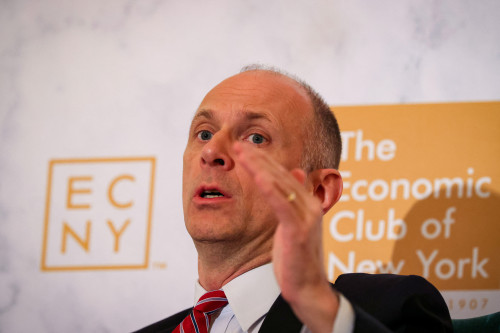By Caroline Valetkevitch and Sruthi Shankar
NEW YORK/LONDON (Reuters) – Global stock indexes hit all-time highs on Friday after China’s central bank lowered interest rates and injected liquidity into its banking system and U.S. inflation continued to ease, while Treasury yields dipped.
The yen firmed against the dollar after Japan’s former defense minister Shigeru Ishiba looked set to become the next prime minister.
Europe’s benchmark STOXX 600 index rose to a record high, and the Dow and the MSCI global stock index also hit record intraday highs.
The personal consumption expenditures price index, the Federal Reserve’s favored inflation measure, rose 0.1% in August after an unrevised 0.2% gain in July. Economists had forecast PCE inflation rising 0.1%. In the 12 months through August, the PCE price index increased 2.2% after rising 2.5% in July.
The U.S. data boosted chances of an outsized interest rate cut at the Fed’s November policy meeting. The Fed kicked off its latest easing cycle on Sept. 18 with a 50 basis point cut in interest rates.
The U.S. rate futures market has priced in a 54% chance of a 50 basis points cut in November, up from about 49% before the release of the data, according to LSEG calculations. For the next two meetings in November and December, the futures market now expects nearly 80 bps in policy easing.
The benchmark 10-year yield slid 3.6 basis points to 3.76%.
“(Fed Chair Jerome) Powell can breathe a little sigh of relief. After pushing for a 50 bps cut instead of a more conventional 25 bps cut the personal income and spending data so far vindicates that decision,” said Brian Jacobsen, chief economist at Annex Wealth Management in Menomonee Falls, Wisconsin.
The Dow and S&P 500 were higher at midday, while the Nasdaq was slightly lower.
U.S.-listed shares of Chinese companies jumped on the latest series of stimulus measures from Beijing to boost the domestic economy.
The Dow Jones Industrial Average rose 440.07 points, or 1.04%, to 42,615.40, the S&P 500 advanced 6.86 points, or 0.12%, to 5,752.23 and the Nasdaq Composite fell 51.73 points, or 0.28%, to 18,138.56.
MSCI’s gauge of stocks across the globe was up 3.58 points, or 0.42%, at 854.27 after hitting a record high. The STOXX 600 index rose 0.51%.
China’s blue chips jumped 4.5%, bringing their weekly rise to 15.7%, the most since November 2008. Hong Kong’s Hang Seng index also gained 3.6% and was up 13% for the week, its best performance since 1998.
China’s central bank lowered interest rates and injected liquidity into the banking system, and more fiscal measures are expected to be announced before week-long Chinese holidays starting on Oct. 1.
The yen strengthened after Japan’s Ishiba won the leadership contest of the country’s ruling Liberal Democratic Party in a narrow victory.
Ishiba is a critic of past monetary stimulus and told Reuters the central bank was “on the right policy track” with rate hikes thus far. Markets had been largely expecting a win for hardline nationalist Sanae Takaichi, a vocal opponent of further interest rate hikes, pricing in loose monetary and fiscal policies and a weaker yen over the past week.
The dollar index, which measures the greenback against a basket of currencies including the yen and the euro, fell 0.15% to 100.45. The euro was down 0.1% at $1.1165.
The dollar weakened 1.26% to 142.97 Japanese yen.
Aluminium prices in London touched a 16-week high on fund buying triggered by the latest economic stimulus measures in top metals consumer China.
Three-month aluminium on the London Metal Exchange was 0.4% higher at $2,623 per metric ton in official open-outcry trading after hitting $2,659, the highest since June 6.
U.S. crude rose 0.27% to $67.85 a barrel and Brent edged up 0.08% to $71.66 per barrel.
(Additional reporting by Chuck Mikolajczak in New York; Editing by Kim Coghill, Kirsten Donovan and Richard Chang)



